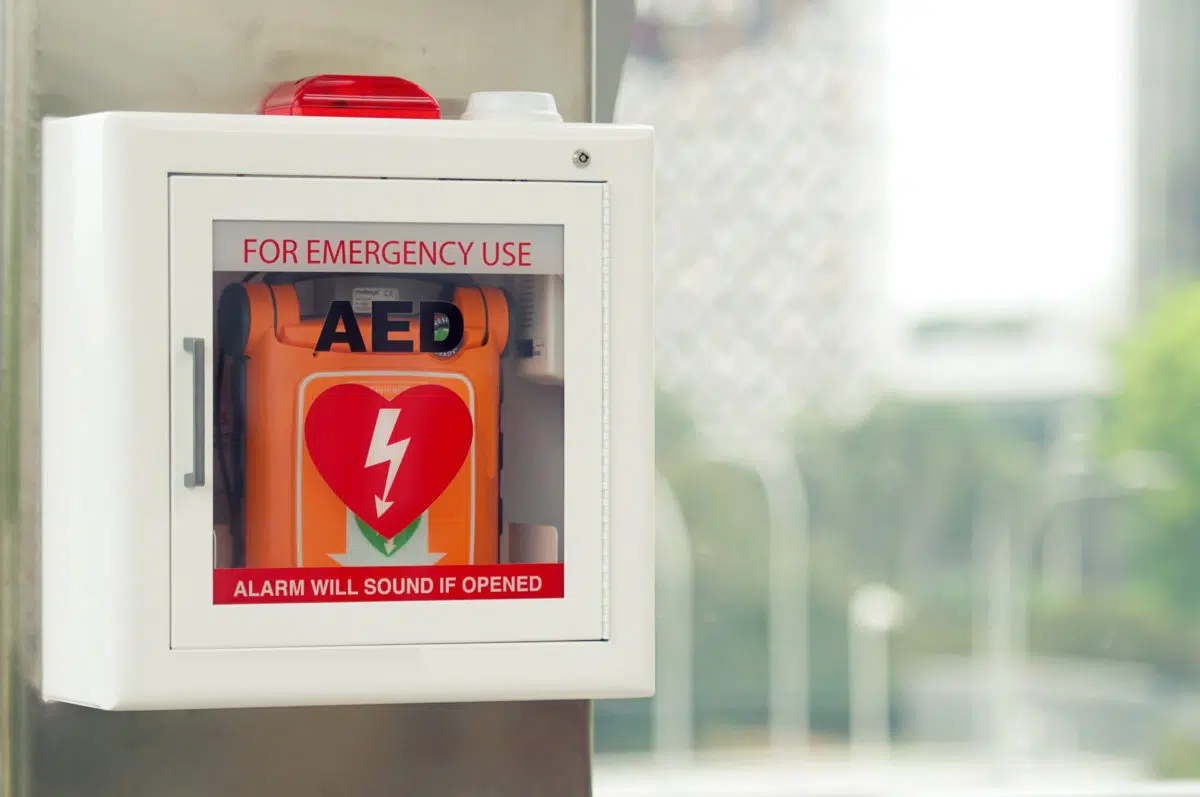An AED’s primary function is to revive a cardiac arrest patient. Currently there are 200,000 AED units sold each year for public use. When using an AED, you must stand clear and ensure no water is around. Standing clear when using an Automated External Defibrillator (AED) is crucial for the safety of both the rescuer and anyone else present during a cardiac emergency. AEDs deliver electric shocks to restore normal heart rhythm, and during this process, it is paramount to avoid physical contact with the person receiving treatment.
Standing clear prevents accidental shocks and ensures the safety of all nearby individuals. AEDs guide users through each step, emphasizing the importance of maintaining a safe distance during the critical moments of defibrillation. This simple precaution enhances the effectiveness of the life-saving intervention.
What does AED stand for?
AED is an “Automated External Defibrillator.” It is a portable device you can use to treat cardiac arrest. AEDs can automatically diagnose and, if necessary, deliver an electric shock (defibrillation) to restore normal heart rhythm.
When to use a defibrillator?
Use a defibrillator (AED) when someone is unconscious, not breathing normally, and has no pulse. It’s crucial in sudden cardiac arrest situations. Follow AED prompts, attach electrode pads to the chest, and administer shocks if advised. Immediate use increases the chances of restoring a normal heart rhythm. Always call emergency services first.
How does an AED work?
To use an AED, you need the device and power it up. Follow the below steps :
- Power On: Turn on the AED to initiate a self-check.
- Attach Pads: Place adhesive electrode pads on the person’s bare chest.
- Analyze Rhythm: AED assesses heart rhythm through the pads.
- Shock Decision: Determines if a shockable rhythm is present.
- Shock Delivery: If needed, prompt the user to press a button to deliver an electric shock.
- CPR Prompt: Guides users to perform CPR between shocks.
- Repeat or Await Help: Continues analyzing and prompting until normal rhythm or professional help arrives.
Read More: AED for fitness professionals
What to do after being given AED shock?
After giving an AED shock:
- Continue CPR: Immediately resume chest compressions after the shock. Follow the AED prompts for the recommended intervals.
- Check for Signs of Recovery: Look for signs of normal breathing and circulation. Assess the person’s responsiveness and pulse regularly.
- If No Improvement: If there’s no improvement, the AED may advise additional shocks. Follow instructions and continue CPR until professional help arrives.
- Monitor Vital Signs: Keep monitoring the person’s vital signs while awaiting emergency medical personnel.
- Stay with the Person: Stay with the person and be prepared to provide further assistance as needed. Update emergency services on the person’s condition.
Be Prepared. Be CPR Certified.
Start your online CPR training today and learn life-saving skills.
When is it unsafe to use an AED?
It is generally safe to use an AED unless in the following situations:
- In a Wet Environment: Avoid using an AED in environments with water or excessive moisture. Move the person to a dry area before applying the AED.
- In the Presence of Flammable Substances: Do not use an AED in the presence of flammable gasses or materials. Move to a safe location before deploying the AED.
- When Chest Is Wet: Ensure the person’s chest is dry before applying electrode pads. Wipe away any moisture to prevent interference with the AED signals.
- When Others Are in Contact with the Person: Ensure that no one is in physical contact with the person when delivering a shock. Clear the area to avoid unintentional shocks to others.
- In the Presence of Implanted Devices: If the person has a medication patch or implanted medical device, avoid placing the electrode pads directly over these areas. Instead, put them at least 1 inch away.
- When the AED Indicates It’s Unsafe: Follow the AEDs voice prompts. If it advises against delivering a shock, reassess the situation and continue CPR until professional help arrives.
On whom should you not use an AED?
Avoid using an AED on infants (without pediatric pads) and if a “no-shock advised” message is displayed. Also, refrain from using in wet environments or on individuals with medication patches or implantable devices directly under the pads. In such cases, prioritize professional medical assistance and CPR.
What are the dangers of an AED?
Automated External Defibrillators (AEDs) are generally safe when used as directed. However, there are some potential dangers or risks associated with AED use:
- Misapplication: Incorrect placement of electrode pads or failure to follow AED prompts can lead to ineffective treatment.
- Safety Precautions: You should never use an AED in environments and take precautions to avoid using them around flammable substances.
- Inappropriate Use on Children: Using adult AED pads on children without pediatric settings or pads can be harmful. You should only use AEDs with pediatric capabilities of this age group.
- Device Malfunction: While rare, technical issues or device malfunctions could occur regular maintenance and checks ensures proper functioning.
- Interference with Medical Devices: Placing electrode pads directly over medication patches or implanted devices may interfere with the AED’s signals.
- No-Shock Advised Situations: In cases where the AED advises against a shock, continuing with CPR is crucial. Failing to follow AED instructions may lead to inappropriate shocks.
Read More: Use of AED for Bungee Jumpers
Learn CPR. Save Lives. Get Certified Online.
Master essential CPR techniques and get certified today.
Conclusion
Using an AED is simple and straightforward. However you must take the necessary precautions. For starters, do not let a child handle a live machine. You must also ensure there is no water around the drive. With a mindful approach towards an AED device you can effectively save people and keep others safe.









